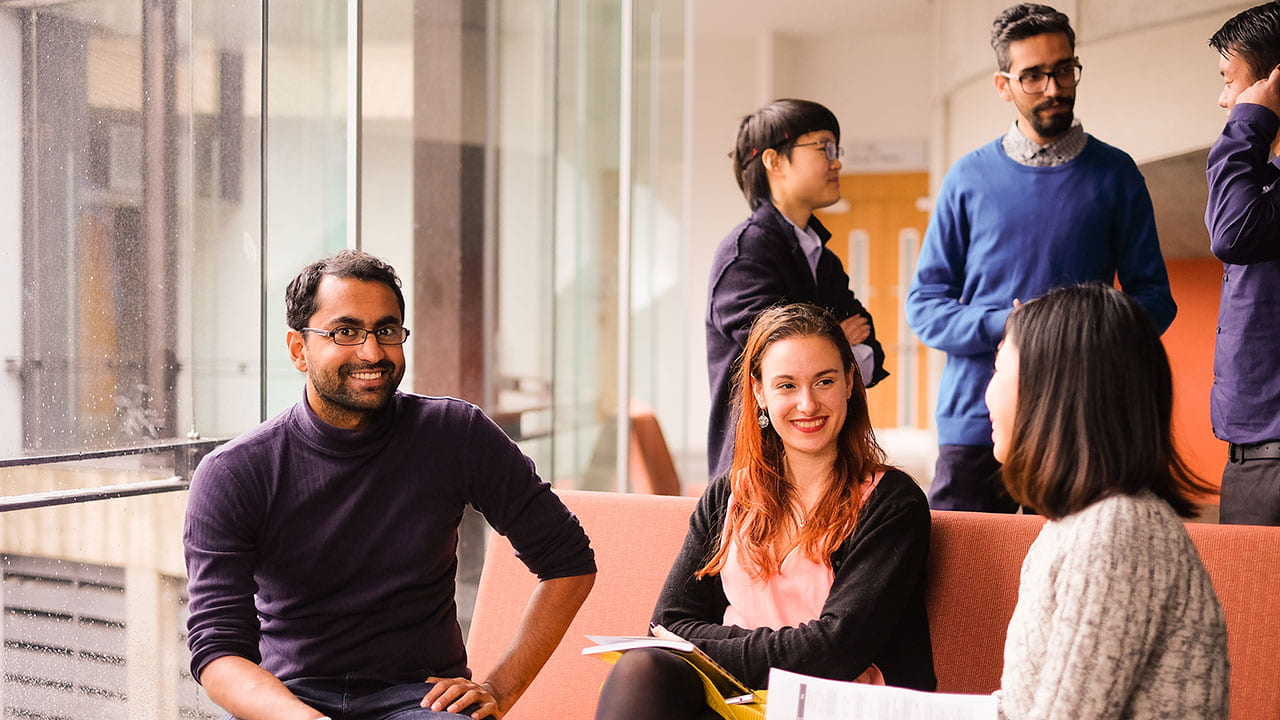Collaborative and peer assessment
Design assessments that help students develop lifelong skills in working with others.
Preparing students for team work develops lifelong skills, such as communication and coordination,1 helps them thrive at work and within their communities.
Learning how to gather, use, and give feedback constructively is especially important beyond university, where there may not be formal, structured opportunities for formative assessment and feedback in the ‘real world’.2
Collaborative and peer assessments also help students develop skills in assessing their own work and actions, enabling them to improve their judgement and self-regulation. See feedback and feed forward.

Small steps
Designing collaborative, co-operative, and peer assessment takes time and planning to do well, but there are some simple things you can do to introduce them into your teaching practice:
For collaboration to go well, it is vital to develop trust within your course. Introduce opportunities for positive and safe peer interaction before conducting group assessment. First steps could be to have students introduce themselves or share something in a discussion forum.
Introduce group work through very low stakes opportunities for collaboration like a brainstorming exercise where there are no ‘wrong answers’.
Consider if there are learning activities that are normally solo that you could incorporate a sharing, cooperative, or collaborative element. For example, reading weekly set texts is usually an individual activity, but this could become a collaborative activity using Perusall, where students read and discuss course material in groups.
In depth
Before collaborative assessments can take place, students and teaching academic staff must develop trust and a sense of safety and shared values. It requires commitment and vulnerability, ‘buy-in’ with the ‘whole self’, therefore belief that one’s voice will be listened to, to form a collaborative learning community.
While the planning, design and implementation of group/team assessments takes time and effort, it can be transformational and is one of the most powerful ways for students to develop valuable lifelong skills.
Considerations for designing collaborative assessment
When creating assessments with group work, key questions to consider are: 3
- What will be assessed? Will the product of the groupwork be assessed, or the process, or some combination?
- When and how will it be assessed? On what evidence will it be assessed: the product, a group report, individual work (segments), an external client or panel, etc.?
- Who will conduct the assessment? Will this be the lecturer, the students (peer), a panel, a real or simulated client, etc.?
Other aspects of planning for group/team work include considering group size and composition, process, and support, as well managing common issues that can arise in groupwork. 4 5
Depending on the context, different types of group and peer work in assessments may be useful:
- Co-operative assessment: Group members “split the work, solve sub-tasks individually, then assemble the partial results into the final output”. 6
- Collaborative assessment: Group members “do the work together”. This includes “collaborative inquiry and joint action in the face of shared challenges” 6 7
- Peer assessment: Students evaluate and grade the work of their fellow students. Must be carefully considered, planned and prepared for, especially for summative assessment.
- Peer review assessment: Students evaluate the work of their fellow students and provide feedback. Does not have to be summative.
For more on the differences between these types of assessments and considerations when choosing which to use, see collaboration versus cooperation and peer assessment versus peer review.
Including opportunities for students to assess their own contribution to collaborative work can help students develop self-reflexiveness and judgement.
Collaborative and peer assessment in practice
Teaching Tip: Boost engagement through interactive student poster sessions
Adapted from Christopher Squire’s biochemistry class, this hands-on group activity promotes creativity, discussion, and a fresh approach to engaging with course content.
Teaching Tip: Set your student teams up for success with a simple team charter
Amanda Di Ienno helps engineering students build stronger, more accountable teams early in their group work.
Teaching Tip: Use Gen-AI to deepen learning and spark creativity
Dr Courtney Ruha (School of Chemical Sciences) helps students connect chemistry to real life through creative, collaborative group projects using generative AI.
Related resources
- Groupwork as a form of assessment: common problems and recommended solutions (journal article, Higher Education)
- Co-operative Learning made easy: A Practical Guide to working with Tertiary Student Groups (Ako Aotearoa report)
- Preparing for Group Work (University of New South Wales, Sydney)
Page added 12/09/2025 (stylistic changes)
- Goodyear, Peter. Effective Networked Learning in Higher Education: Notes and Guidelines. Deliverable 9. Bristol, UK: Joint Information Systems Committee (JISC), 2001. 81-84. ↩
- Boud, David. “Sustainable Assessment: Rethinking Assessment for the Learning Society.” Studies in Continuing Education 22, no. 2, (2000): 151-167. DOI: 10.1080/713695728. ↩
- Centre for Academic Development. Improving Learning and Teaching: Group Work and Group Assessment. Wellington: Victoria University, 2013. p 8. https://www.wgtn.ac.nz/learning-teaching/support/approach/guides/group-work-and-assessment/group-work-assessment.pdf. ↩
- Centre for Academic Development, 8-9. ↩
- Davies, W. Martin. “Groupwork as a Form of Assessment: Common Problems and Recommended Solutions.” Higher Education 58, no. 4 (2009): 563-584. ↩
- Dillenbourg, Pierre. “What Do You Mean by Collaborative Learning?” In Collaborative-Learning: Cognitive and Computational Approaches, edited by Pierre Dillenbourg, 1–19. Oxford: Elsevier, 1999. P 8. ↩
- Gourlay, Lesley., José Luis Rodríguez-Illera, Elena Barberà, Maha Bali, Daniela Gachago, Nicola Pallitt, Chris Jones et al. “Networked Learning in 2021: A Community Definition.” Postdigital Science and Education 3, no. 2 (2021): 326-369. https://doi.org/10.1007/s42438-021-00222-y. ↩



